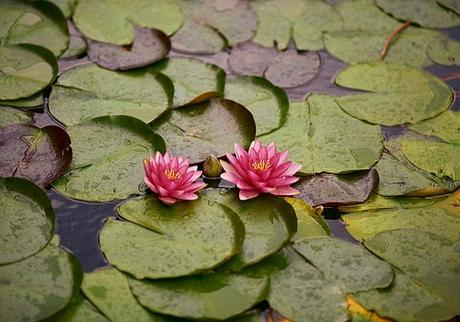We all want that certain place in our home where we feel at peace and relax after a day’s work. And a backyard is certainly one of the places that fit the place especially if it has a bog garden.
What is a bog garden?
A bog garden is a great alternative to a pond. The difference between them is that one is a pool of standing water while the other is a patch of slow-draining, waterlogged soil that mimics natural bog conditions. Bogland is exciting because it’s a transitional habitat, linking the wet and dry ecosystems within a landscape. Like any transitional habitat, bogs offer vital resources to a huge variety of wildlife. As well as creating biodiversity, the moisture-loving flora of the bog can look utterly spectacular. These are colorful and dramatic species. They are great fun to play with, growing big and tall and making a real statement. Bringing a touch of boggy splendor to your garden is easier than you might think.

Late summer to early autumn is the best time to begin, as your bog will be able to establish itself before winter, and the plants will have the best possible start in spring. A bog garden works equally well adjacent to a pond or on its own. Naturally, damp clay soils are ideal, but you can create wet habitat in free-draining soil if you use a liner and introduce topsoil. You can even make a mini-bog in a container – half a barrel lined with plastic is all you need to bring a slice of this extraordinary and lively habitat into your backyard.
How to build a bog garden
Planning
Mark the outline using a rope or hose on sunny, level ground away from overhanging trees. As with any wetland site you need as much sun as possible for at least six hours a day.
Digging
Dig a hole 50–100cm deep, placing the soil to one side. Line the hole with a butyl liner and pierce with a fork for drainage (remember, you are not making a pool but an area of wet soil).
Lining
You can add a 3cm layer of grit or gravel over the liner to help prevent the soil from blocking the drainage holes, but it’s not essential. The water will eventually find its way through.
Backfilling
Fill the hole and trim back the liner. Mix in just a small amount of old compost–too many nutrients will result in too much leaf, making your bog garden hard to control.
Planting
Plant up with nectar-rich, moisture-loving plants and water thoroughly while they get established, then leave the area to become naturally waterlogged over winter. Think about the flowering year. Marsh marigold blooms in spring, for example; yellow flag iris in summer and hemp agrimony in early autumn.
What kind of plants live in a bog garden?
- Purple loosestrife
- Yellow flag iris
- Meadowsweet
- Hemp agrimony
- Royal fern
- Hosta
- Water avens
- Ragged robin
- Cuckoo flower
- Creeping Jenny
- Marsh marigold
- Globeflower
- Water forget-me-not
- Cotton grass
- Water mint
- Greater spearwort
Species to Spot in your Bog Garden
Bog gardens provide a vital connection between watery and dry environments. As well as attracting traditional pond visitors such as newts and frogs, bog vegetation feeds and shelters a host of invertebrates, which in turn sustain birds and bats.
- ELEPHANT HAWKMOTH. These long-tongued moths are particularly fond of purple loosestrife, in flower June–August.
- FROGLETS AND FROGS. Froglets emerge in July and need low vegetation, such as water forget-me-not, for shade and shelter.
- COMMON NEWT. Newts lay their eggs on small, broadleaved plants, such as water mint and water forget-me-not.
- ORANGE-TIP BUTTERFLY. The larval foodplant of this insect is cuckoo flower (also known as ‘lady’s smock’), in bloom April–June.
- COMMON BLUE DAMSELFLY. Damsels and dragons need tall plants for perching, such as meadowsweet and flag iris
- BUFF-TAILED BUMBLEBEE. Early spring bees will feast on the nectar of early flowering blooms such as marsh marigold.
Bog Garden Tips
- Plant a combination of the short (eg. water avens, creeping jenny) for ground cover and the tall (eg. flag iris) for perches. Do mix it all up a bit, though – there are no rules.
- Allow your bog plants as much space as you can. These are large plants with big roots and they need plenty of water. You want to create a reservoir of moisture low down in the soil and avoid having to top it up – if the area is too small it will dry out quickly.
- Bog species can be vigorous, requiring annual maintenance. Include a few flat stones to step on while snipping–this will prevent the soil from compacting.
- Avoid pendulous sedge for height – it can get very aggressive (use flag iris, purple loosestrife and meadowsweet instead), and gunnera – it can get very big.
- Water your bog in drought (respect hosepipe bans). It’s worth burying a leaky hose around the edge and connecting to your main hose.
